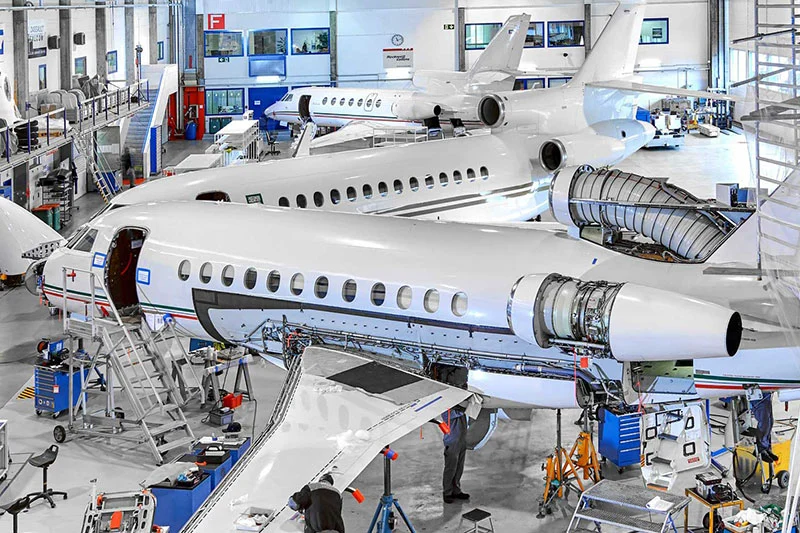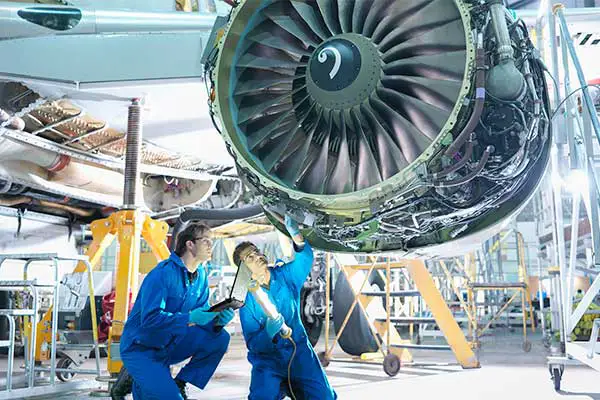Vacuum Furnaces: Key Applications in the Aerospace Industry
 BROTHER FURNACE
BROTHER FURNACE
 2024-12-12 23:13
2024-12-12 23:13
In the aerospace industry, aircraft and spacecraft demand exceptional material properties and precision in component manufacturing. Even the slightest defect can compromise performance and safety. Many critical manufacturing processes are conducted in a vacuum to meet these rigorous standards, ensuring purity, material uniformity, and thermal stability. With their high-temperature capabilities, oxygen-free conditions, and precise atmospheric control, vacuum furnaces have become indispensable in aerospace manufacturing.

Critical Components Requiring Vacuum Furnaces
Core Components of Aircraft Engines
Turbine Blades: Require high-temperature resistance and oxidation prevention, achieved through brazing and heat treatment in vacuum furnaces.
Combustion Chamber Liners: Vacuum sintering and heat treatment ensure thermal stability at extreme temperatures.
Compressor Components: Titanium and superalloy parts, such as compressor discs and guide vanes, undergo precision processing in vacuum furnaces.
Structural Parts of Aircraft
Wing Connectors: Vacuum heat treatment eliminates residual stress, ensuring high strength and lightweight properties.
Landing Gear Components: Vacuum heat-treated titanium alloys enhance fatigue resistance.
Key Components of Spacecraft
Satellite Antenna Supports: Carbon fiber composites are cured in vacuum furnaces to achieve high strength and lightweight characteristics.
Propulsion System Components: Corrosion-resistant and high-temperature turbine pumps and nozzles are brazed in vacuum furnaces.
Thermal Insulation Panels and Heat Shields: Vacuum sintering ensures excellent high-temperature insulation performance.
Electronics and Instrumentation
Electronic Enclosures: Vacuum brazing ensures hermetic sealing.
Optical Lenses and Sensor Housings: Vacuum heat treatment improves performance and precision.

Key Applications and Processes of Vacuum Furnaces in Aerospace
Material Preparation
Superalloy Melting and Casting: Used to produce turbine blades and combustion chambers, ensuring material purity and uniformity.
Titanium Alloy Processing: Vacuum furnaces are employed for annealing, aging, and stress-relief heat treatment, enhancing strength and toughness.
Composite Material Sintering: Carbon fiber composites for spacecraft structures are cured and sintered in vacuum furnaces, delivering lightweight yet durable components.
Component Manufacturing
Vacuum Brazing: Complex assemblies like fuel injectors, heat exchangers, and electronic components are joined with robust, defect-free joints.
Heat Treatment of Parts: Critical components such as wing connectors, landing gear, bearings, and rails undergo vacuum quenching and tempering to improve fatigue resistance and durability.
Ceramic Coating Sintering: High-temperature protective ceramic coatings are uniformly bonded in vacuum furnaces.
Precision Equipment Manufacturing
Processing of Avionics Components: Electronic parts and sensors are treated in vacuum environments to eliminate impurities, ensuring high reliability and longevity.
Surface Treatment of Engine Parts: Turbine discs and compressor blades undergo vacuum carburizing and nitriding to enhance wear resistance and corrosion protection.
Conclusion
Vacuum furnaces, with their outstanding high-temperature performance, precise control capabilities, and reliable processing environment, play a pivotal role in the aerospace industry. From material preparation to component manufacturing and precision equipment production, they ensure the performance and safety of aircraft and spacecraft.
If you're looking for the ideal vacuum furnace solutions for the aerospace industry, don’t hesitate to contact Brother Furnace.













